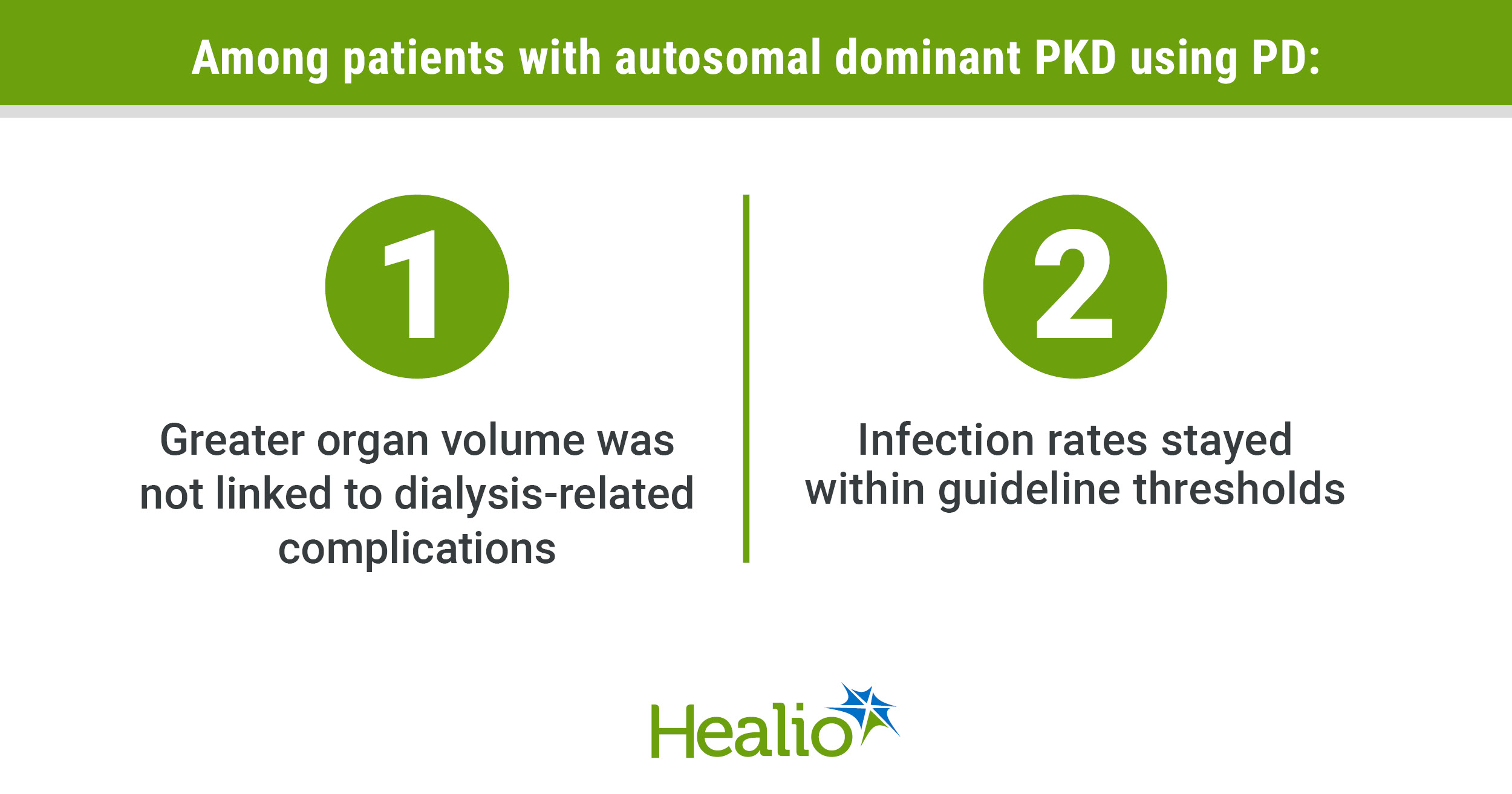September 02, 2025
2 min read
Key takeaways:
- Infection rates stayed within International Society for Peritoneal Dialysis guideline thresholds during the study.
- The most prevalent complications were abdominal hernia and peritonitis.
Peritoneal dialysis is safe for patients with autosomal dominant polycystic kidney disease, with no added risk associated with larger organ volumes, according to study data.
“Autosomal dominant PKD (ADPKD) is the most prevalent genetic kidney disorder and the fourth leading cause of kidney failure, with 50% of patients reaching kidney failure by their sixth decade of life,” Fadi George Munairdjy Debeh, MD, a nephrology research fellow at Mayo Clinic Florida, and colleagues wrote. “PD is a widely used modality for kidney replacement therapy in patients with kidney failure.” However, use of PD by patients with ADPKD is low because of the “theoretical risk that enlarged kidneys can impair a patient’s ability to tolerate sufficient intraperitoneal volume to achieve adequate dialysis clearance.”

Data derived from
Munairdjy Debeh FG, et al. Kidney360. 2025;doi:10.34067/KID.0000000888.
The researchers aimed to assess PD use by adults with ADPKD, focusing on cumulative cystic organ volumes and treatment complications. The retrospective cohort study used the Mayo Clinic PKD database to evaluate data from 155 patients with ADPKD on PD.
Overall, 45.1% of patients were men, mean age at PD initiation was 54.3 years and mean BMI was 28 kg/m². The median duration of PD treatment was 24.3 months, during which 21.9% of patients transitioned to hemodialysis.
The researchers assessed demographic, clinical and PD-related outcomes of patients on PD at multiple Mayo Clinic sites from 1990 to 2024.
The most prevalent complications were abdominal hernia (30.3%) and peritonitis (23.9%), according to the findings. The peritonitis rate was 0.11 episodes per patient-year.
Imaging results before beginning PD indicated a median height-adjusted total kidney liver volume of 2,731.9 mL/m and a 1,303.5 mL/m median height-adjusted total kidney volume.
Analysis showed no significant differences in complication rates associated with median height-adjusted total kidney liver volume or median height-adjusted total kidney volume, or across BMI categories. Greater height-adjusted cumulative organ volumes were linked to lower risk for PD-related complications (HR = 0.56).
Overall, the study supports PD safety, with infection rates staying within International Society for Peritoneal Dialysis guideline thresholds, according to the researchers.
“In conclusion, this study demonstrates that PD is a safe and feasible option for patients with ADPKD, even with high cystic organ volumes,” the researchers wrote. “Larger organ volumes, including height-adjusted cumulative kidney and liver volume, were not associated with increased PD-related complications. Complication rates, including peritonitis and abdominal wall hernias, were low, reflecting the impact of rigorous infection prevention and patient education. While limited by its retrospective design and lack of control groups, these findings support the feasibility of PD in ADPKD and highlight the need for future prospective studies to further refine treatment strategies.”










